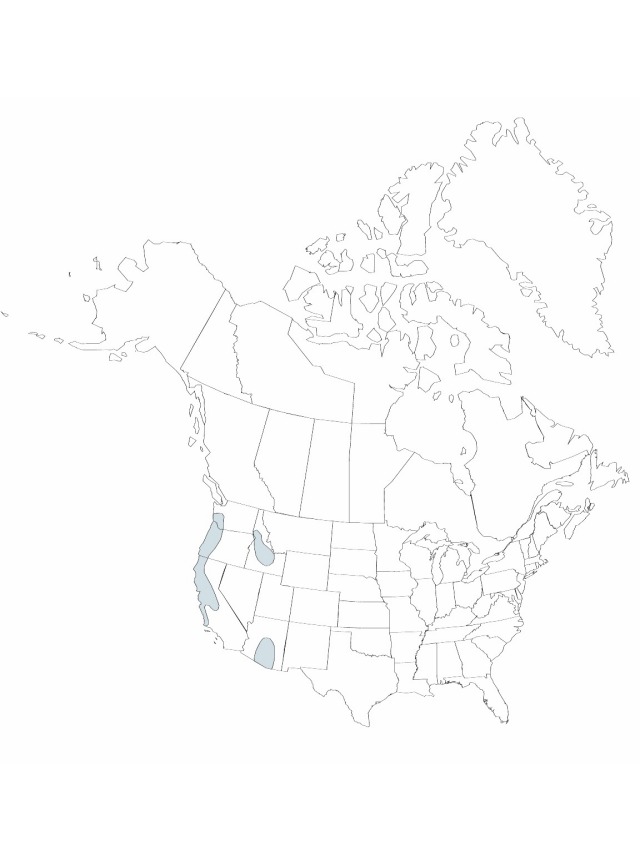Difference between revisions of "Juncus occidentalis"
Bulletin of the Torrey Botanical Club 27: 521. 1900.
FNA>Volume Importer |
imported>Volume Importer |
||
| (5 intermediate revisions by 2 users not shown) | |||
| Line 8: | Line 8: | ||
}} | }} | ||
|common_names=Western rush | |common_names=Western rush | ||
| − | |basionyms={{Treatment/ID/ | + | |special_status={{Treatment/ID/Special_status |
| + | |code=E | ||
| + | |label=Endemic | ||
| + | }} | ||
| + | |basionyms={{Treatment/ID/Basionym | ||
|name=Juncus tenuis var. occidentalis | |name=Juncus tenuis var. occidentalis | ||
|authority=Coville | |authority=Coville | ||
| + | |rank=variety | ||
| + | |publication_title=Proc. Biol. Soc. Wash. | ||
| + | |publication_place=10: 129. 1896 | ||
}} | }} | ||
|synonyms={{Treatment/ID/Synonym | |synonyms={{Treatment/ID/Synonym | ||
|name=Juncus tenuis var. congestus | |name=Juncus tenuis var. congestus | ||
|authority=Engelmann | |authority=Engelmann | ||
| + | |rank=variety | ||
}} | }} | ||
|hierarchy=Juncaceae;Juncus;Juncus subg. Poiophylli;Juncus occidentalis | |hierarchy=Juncaceae;Juncus;Juncus subg. Poiophylli;Juncus occidentalis | ||
| Line 39: | Line 47: | ||
-->{{#Taxon: | -->{{#Taxon: | ||
name=Juncus occidentalis | name=Juncus occidentalis | ||
| − | |||
|authority=(Coville) Wiegand | |authority=(Coville) Wiegand | ||
|rank=species | |rank=species | ||
| Line 53: | Line 60: | ||
|publication title=Bulletin of the Torrey Botanical Club | |publication title=Bulletin of the Torrey Botanical Club | ||
|publication year=1900 | |publication year=1900 | ||
| − | |special status= | + | |special status=Endemic |
| − | |source xml=https:// | + | |source xml=https://bitbucket.org/aafc-mbb/fna-data-curation/src/2e0870ddd59836b60bcf96646a41e87ea5a5943a/coarse_grained_fna_xml/V22/V22_572.xml |
|genus=Juncus | |genus=Juncus | ||
|subgenus=Juncus subg. Poiophylli | |subgenus=Juncus subg. Poiophylli | ||
Latest revision as of 20:32, 5 November 2020
Herbs, perennial, cespitose, 3–6 dm. Rhizomes densely branching. Culms few–20. Leaves basal, (1–)2–3; auricles 0.5–1(–1.5) mm, apex acutish, membranous; blade flat, 5–15 cm × 0.5–1.3 mm, margins entire. Inflorescences 5–50-flowered, somewhat loose, 1–7 cm; primary bract usually longer than inflorescence. Flowers: bracteoles 2; tepals greenish, lanceolate, (3.5–)5 mm; outer and inner series nearly equal; stamens 6, filaments 0.5–1 mm, anthers 0.1–0.3 mm; style 0.1–0.2 mm. Capsules light brown, 1-locular to pseudo-3-locular, ellipsoid, (3–)5–4.5 × 1.2–1.8 mm, nearly equal to shorter than tepals. Seeds tan, ellipsoid to lunate, 5.5–0.7 mm, not tailed. 2n = 80.
Phenology: Flowering spring–early summer.
Habitat: Moist, usually exposed sites in clayey or sandy soil around springs, along rivers and streams, and around lakes
Elevation: below 2300 m
Distribution

Ariz., Calif., Idaho, Nev., Oreg., Wash.
Discussion
Juncus occidentalis should perhaps be considered a robust variant of J. tenuis.
Selected References
None.